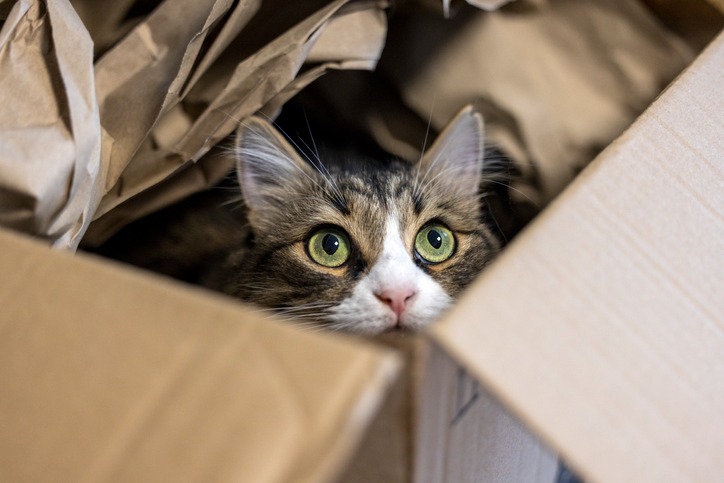You have your moving checklist in hand, you’ve booked moving services, and you’re just about ready to embark on your next move, but what about your pets? Pet owners and pet parents love their animals, but when it comes to moving a long distance with them, they may not be aware of how to go about their relocation with their animals. After all, you don’t want to forget about the needs of your furry or feathered friends come moving day! Most pets take comfort in their routines, from their regular feeding times and favorite toys to their sleeping spots and activities.
Moving derails pets from their routines and can cause a significant amount of stress and anxiety until their routine restabilizes. Here, our Gainesville moving experts with UF Mover Guys offer tips for moving long distances with pets and how to make the process as streamlined as possible. Looking for reliable movers to handle the heavy lifting? Contact us today!

Acclimate Your Pet To Change
Moving is a significant transition for everyone in your household, but even more so for your pets. Whether your pets have fur, fins, scales, feathers, or otherwise, your pet’s needs should be at the top of your priorities through each stage of your move. As such, there’s quite a bit of organization and preparation needed prior to moving a long distance with your pet. The sooner you start planning your move with your pet and acclimating them to the changes that will occur, the better.
In many cases, the safest way to relocate a pet is with them in a crate or carrier. Purchase one well in advance of your move and ensure it meets the requirements of the airline carrier (if applicable) or that it will fit comfortably in your car or other mode of transportation. Some pets love their crate or carrier, but others may take time to get used to them. Allow your pet to spend time around and in the opened crate or carrier ahead of your move. That way, but the time moving day arrives, they will be comfortable in it.
Visit Their Veterinarian
During the planning phase of your upcoming move, you should make sure to visit your pet’s veterinarian for a check-up as well as any vaccinations, medications, refills, documentation, and anything else your pet may require. If your pet is prone to motion sickness, you can ask your vet about options for medication to remediate it. Consider getting your pet microchipped prior to your move-out date. Microchip implantation is a speedy, relatively painless, and simple procedure necessary for most pets.
If you are ever separated from your animal, the implanted microchip will provide anyone who scans it with your contact information so you can reunite with them. In addition to microchip implantation, ask your vet about vaccinations, blood tests, and parasite preventatives. Ask them if they can recommend a veterinarian in your new location where you can take your pet when you arrive at your new destination.
Prepare Your Pet For The Move
Proper planning is the ideal way to make a long-distance journey with your pet more simple. You should spend time gathering the following. Depending on the duration of your travel, you may need to identify and reserve stays in pet-friendly hotels or B&Bs long before your move-out day arrives. You should also compile a list of stopping points that are friendly to pets so you can take breaks with them along the way.
- Vaccination records
- Identification tags
- Portable food and water dishes
- Several days of food and fresh water
- Treats and toys
- Cat litter, litter box, and scooper
- Dog waste bags
- Harness and leash
- A cozy blanket and pillow or bedding
- Pee pads and protective coverings
- Cat carrier or pet crate
Keep Your Pet Safe & Comfortable
You should ensure your pets are as safe, secure, and comfortable as possible throughout each stage of your long trip. Depending on the type of pet you have, you should discuss the best protocols for keeping them safe in the car or on the airplane with your veterinarian. If your pet is in a crate, you should ensure the crate is sufficiently roomy enough for them to stand up, turn around, and rest comfortably. Crates are generally made from metal, which is uncomfortable for pets, so be sure to line the crate or carrier with an appropriate amount of cozy blankets, throws, and padding.